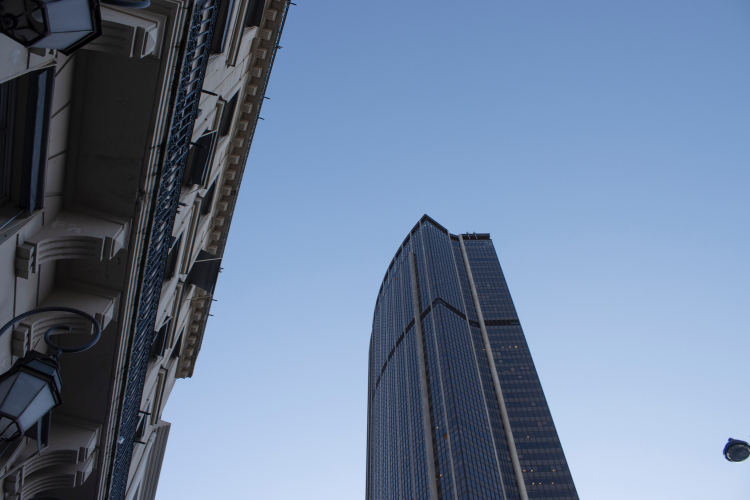Architectural Disgust

I’m sure we have all had the jarring moment walking through the picturesque Invalides, when all of a sudden, a towering concrete monstrosity appears out of nowhere and is that a frowning Greta Thunberg painted onto it? What on earth is this anyway, and why is it ruining my Instagram photo?
That building is the Tour Montparnasse, and no that’s not Greta Thunberg, although I agree, the resemblance is uncanny. The mural is actually of a little boy with the intent to spread awareness about childhood cancer, and while I have no explanation as to why that poor kid is plastered onto Paris’s only skyscraper, I can offer the story behind this overbearing and unexpected tower.
The ground upon which the Tour Montparnasse was built originally housed a train station. When the Great Depression hit Paris, however, the station’s usage declined, and eventually, it shut down. Some twenty years later, the entire area of Montparnasse was subject to redevelopment and refurbishment. The train station was due to be demolished and ideas for what would take its place began cropping up.
Plans for the building were first drawn up in the late fifties, and they were so heavily critiqued that progress was stagnant for another decade. What ultimately got the building approved was a change in government. When Georges Pompidou, the president of France from 1969-1974, came to power, he envisioned Paris’ future as one more akin to Manhattan: industrial, international, and important. Together with his minister of culture, a champion of contemporary design, André Malraux, the two reignited the Tour Montparnasse project, and Pompidou cited it as “a contemporary belfry…in the name of France.” While I can only speculate as to whether Pompidou desired more structures like the surviving Tour, I can say for sure that his vision for Paris is abundantly clear today… from every arrondissement.
The building stands at a shocking 209 meters tall. It has 56 floors. When it first opened it was the tallest building in Europe. Now, buildings of this grandeur have popped up all over Paris’ periphery, but none have accompanied the Tour Montparnasse in the city center. Perhaps what many find so disturbing about the building is that it is in such direct competition with the Eiffel Tower. Quite literally the Parisian skyline is made up of these two structures: one of which is beloved and one of which has been detested since before the concrete was poured. Without stretching too far, I think it is fair to call this tension what it is: old Paris vs. new Paris. Tourists and residents alike are obsessed with old Paris, and quite frankly the city is growth restricted. Every other skyscraper or large structure has been pushed to La Defense or Neuilly-sur-Seine. This “anywhere but here” attitude is far from sustainable and another reminder of just how tense this city feels about change.
It’s not just the scale of the building that unnerves residents and tourists, however. 56 pillars anchor the building 70 meters underground, and the tower takes up 40,000 square meters. Essentially, it is not going anywhere. This building may contain more concrete than all other Parisian structures combined. And while it is quite practical for cities to grow vertically, Paris has never cared for practicality, and one would be hard-pressed to find another building in this city that so evidently values efficacy over aesthetics. It’s just not how Paris prefers to operate.
But why is that? It has been half a century since the building took control of the Parisian skyline, and we kind of need to get over it. Paris is a city. Cities rely on industry, and skyscrapers were the 20th century industrial breakthrough.
It is certainly a belfry for a dream of Paris that never quite came true. While we may shudder to think what a Paris rid of Haussmann in favor of concrete skyscrapers would look like, or one where the Eiffel Tower was replaced with a more practical attraction, such as a hospital. While it can be frustrating to have such an imposing structure ‘ruin’ the view from your window, isn’t it rousing to think that once upon a time Paris was meant to modernize? Is that really so ugly?










